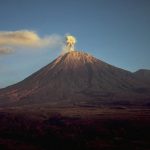Jawa Timur
East Java
East Java
Jer Basuki Mawa Béya - Kesuksesan membutuhkan pengorbanan - Success requires sacrifice
 East Java (Indonesian: Jawa Timur) is a province of Indonesia. It has a land border only with the province of Central Java to the west; the Java Sea and the Indian Ocean border its northern and southern coasts, respectively, while the narrow Bali Strait to the east separates Java from Bali.
East Java (Indonesian: Jawa Timur) is a province of Indonesia. It has a land border only with the province of Central Java to the west; the Java Sea and the Indian Ocean border its northern and southern coasts, respectively, while the narrow Bali Strait to the east separates Java from Bali.
Located in eastern Java, it also includes the island of Madura, which is connected to Java by the longest bridge in Indonesia, the Suramadu Bridge, as well as the Kangean and Masalembu archipelagos located further east and north, respectively. Its capital is Surabaya, the second largest city in Indonesia, a major industrial center and also a major business center. Banyuwangi is the largest regency in East Java and the largest on the island of Java.
Other religions are also worshipped, such as Christianity, which are mostly worshipped by Chinese Indonesians and immigrants from Eastern Indonesia and North Sumatra, and also Hinduism which are mostly worshipped by the Tenggerese people in the Bromo Tengger Semeru National Park and the Balinese people inhabiting the easternmost part of the province bordering Bali. The Indonesian language is the official language of the province as well as the whole nation, but Javanese and Madurese are the most frequently used language. Indonesian is only used for inter-ethnic communication and official purposes.
East Java is one of the provinces in Indonesia that offers different types of tourist attractions. This area offers a variety of natural attractions ranging from mountains, beaches, caves, to waterfalls. In general, almost every regencies or city in East Java has its own unique tourist destinations, such as the Ijen volcano in Banyuwangi, Baluran National Park in Situbondo, Bromo Tengger Semeru National Park, etc.
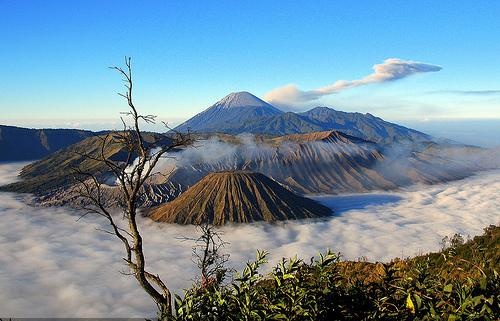 Geography
Geography
East Java province borders the Java Sea in the north, the Strait of Bali in the east, the Indian Ocean in the south, as well as the Central Java province in the west.
The length of the east–west stretch of about 400 km. The width of the stretch of the north–south in the west about 200 km, but in the eastern part of narrower by about 60 km. Madura is the largest island in East Java, separated from the mainland Java by the Strait of Madura.
 Bawean Island is located about 150 km north of Java. In the east of Madura there are a cluster of islands, the easternmost is Kangean Island and the northernmost is Masalembu Islands. In the southern part there are two small islands namely Nusa Barong and Sempu Island.
Bawean Island is located about 150 km north of Java. In the east of Madura there are a cluster of islands, the easternmost is Kangean Island and the northernmost is Masalembu Islands. In the southern part there are two small islands namely Nusa Barong and Sempu Island.
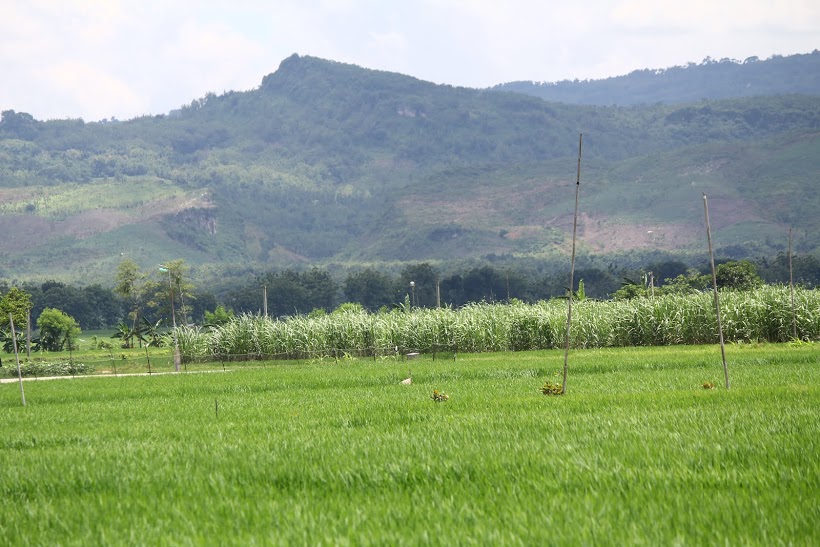 Geology
Geology
In physiographic of geology, East Java Province can be grouped into three zones: the southern zone (plato), the middle zone (volcanic), and the northern zone (folds). Lowlands and highlands in the middle (of Ngawi, Blitar, Malang, to Bondowoso) has a fairly fertile soil. In the northern part ( Bojonegoro, Tuban, Gresik, to Madura Island) lies the Kapur Utara mountains and the Kendeng mountains which are relatively barren.
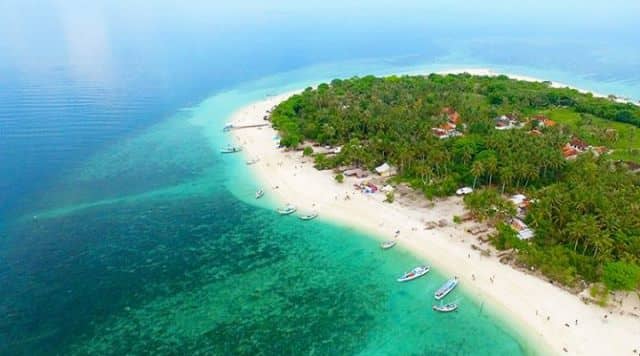 In the middle of the province stretch mountain ranges and volcanoes: On the border with Central Java is Mount Lawu (3,265 metres). Southeast from Madiun is Mount Wilis (2,169 metres), and Mount Liman (2,563 metres). In the middle of the corridor lies the Anjasmoro mountains with peaks Mount Arjuno (3,339 metres), Mount Welirang (3,156 metres), Mount Anjasmoro (2,277 metres), Mount Kawi (2,551 metres), and Mount Kelud (1,731 metres); The mountains are located in most Kediri, Blitar, Malang, Pasuruan, Mojokerto and Jombang.
In the middle of the province stretch mountain ranges and volcanoes: On the border with Central Java is Mount Lawu (3,265 metres). Southeast from Madiun is Mount Wilis (2,169 metres), and Mount Liman (2,563 metres). In the middle of the corridor lies the Anjasmoro mountains with peaks Mount Arjuno (3,339 metres), Mount Welirang (3,156 metres), Mount Anjasmoro (2,277 metres), Mount Kawi (2,551 metres), and Mount Kelud (1,731 metres); The mountains are located in most Kediri, Blitar, Malang, Pasuruan, Mojokerto and Jombang.
The group has the peak of Mount Bromo Tengger (2,329 metres), and Mount Semeru (3,676 metres). Mount Semeru, which is also called Mahameru is the highest mountain in the island of Java. In the easternmost part if the province, there are two groups of mountains: the Iyang mountains with the peak Mount Argopuro (3,088 metres), the Ijen mountains with the peak Mount Raung (3344 metres) In the south there is a series of hills, that of the south coast of Pacitan, Trenggalek, Tulungagung, Blitar, Malang. the Kapur Selatan mountains is a continuation of a series of the Sewu mountains in Yogyakarta.
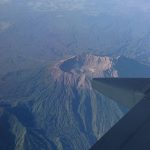

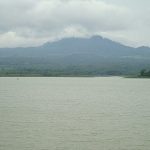

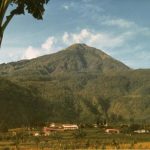

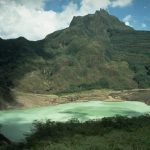
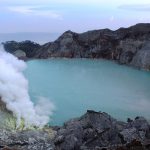
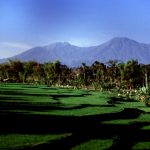
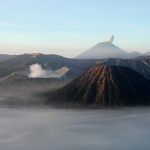

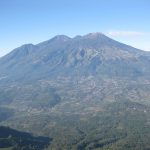
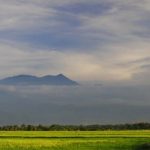
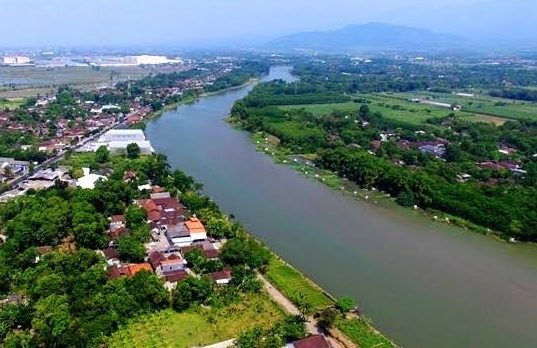 Water
Water
Two of the most important rivers in East Java is the Brantas River (290 kilometres), and the Solo River (548 kilometers). Brantas River has headwaters on the slopes Mount Arjuno near Batu, and flows through most areas in East Java, like Malang, Blitar, Tulungagung, Kediri, Jombang and Mojokerto.
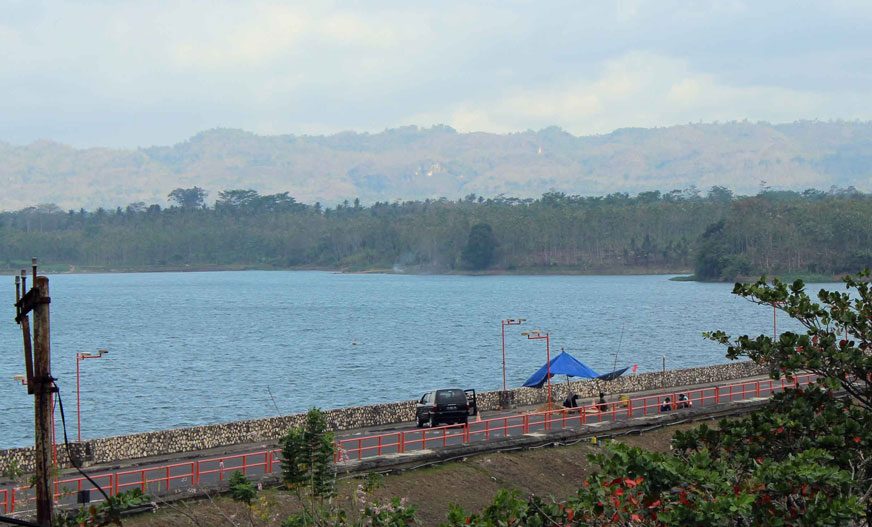 In Mojokerto, Brantas River split into two: Kali Mas, and Porong; both empties into the Madura Strait. Solo River has headwaters on the slopes of Mount Lawu which lies on the border of East Java and Central Java, and flows through a portion of the eastern part of Central Java and East Java, which eventually empties in Gresik.
In Mojokerto, Brantas River split into two: Kali Mas, and Porong; both empties into the Madura Strait. Solo River has headwaters on the slopes of Mount Lawu which lies on the border of East Java and Central Java, and flows through a portion of the eastern part of Central Java and East Java, which eventually empties in Gresik.
Brantas River and Bengawan Solo are managed by Perum Jasa Tirta I. On the slopes of Mount Lawu near the border with Central Java are Sarangan, a natural lake. The main dam in East Java, among others Ir. Sutami and Selorejo Dam, which is used for irrigation, fish farming and tourism.
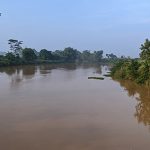
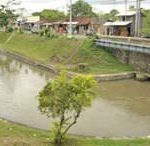

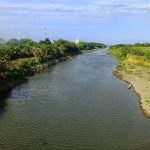
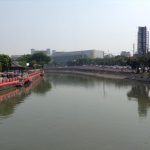
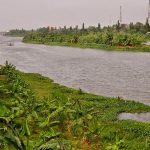
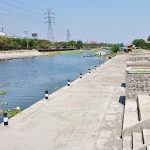
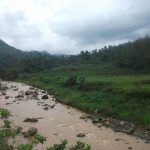
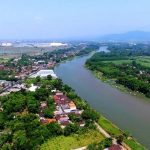
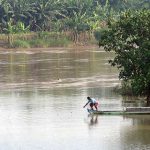
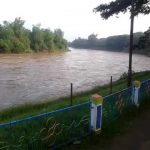
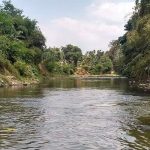

 Climate
Climate
East Java has a tropical monsoon and savanna climate at lower elevation and subtropical at higher elevation. Compared with the western part of Java Island, East Java in general has less rainfall. Average rainfall is 1,900 mm per year, with a rainy season during the 100 days.
The average temperature ranges between 19-34 °C. Temperatures in the lower mountain areas, and even in areas Ranu Pani (slopes of Mount Semeru), temperatures can reach minus 4 °C, causing a frost and fall of light snow.
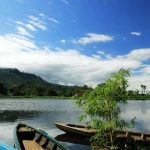
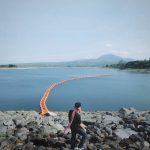
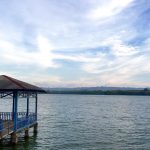
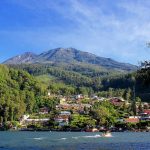
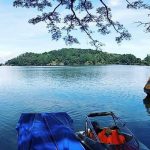
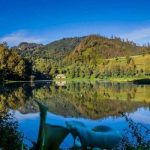
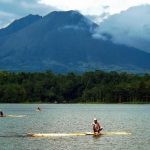
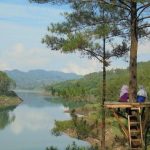
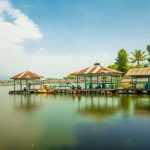
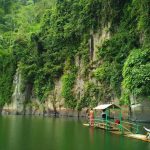


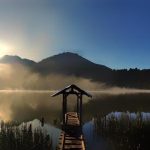
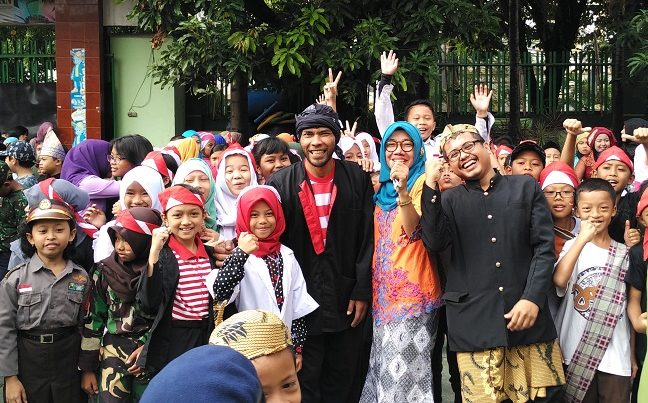 Demography
Demography
According to the 2000 census, East Java had 34,765,993 people, which increased to 37,476,757 people at the 2010 Census, making it the second most populous Indonesian province after West Java. Akin to Central Java, the region’s birth rates are not necessarily any lower than the rest of Java, however due to net population outflows, especially in times of calamity, not limited to volcanic eruptions or droughts, the region has varying rates of population growth that are generally lower than national average.
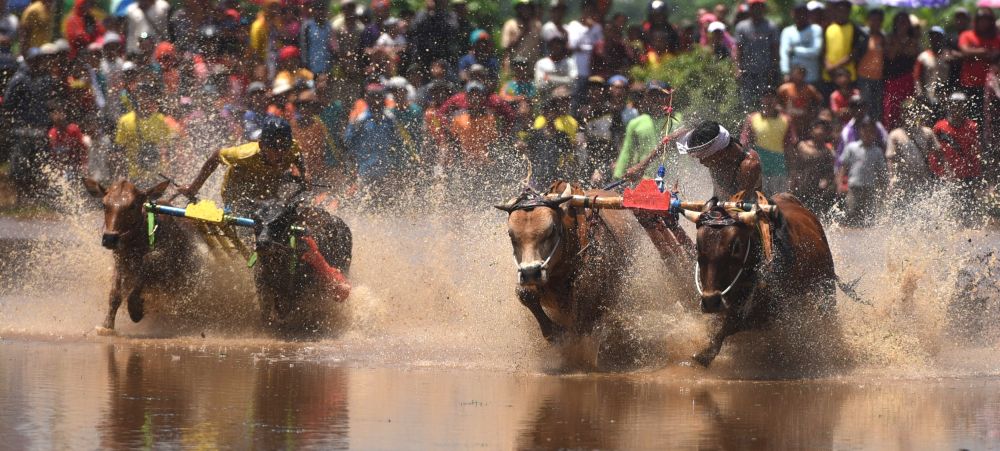 Ethnic Javanese dominate the Java mainland as well as the total population of the province overall, while ethnic Madurese inhabit Madura and the Kangean and Masalembu archipelagos, though centuries of migrations have led the Java mainland to have a larger proportion of Madurese people than Madura itself.
Ethnic Javanese dominate the Java mainland as well as the total population of the province overall, while ethnic Madurese inhabit Madura and the Kangean and Masalembu archipelagos, though centuries of migrations have led the Java mainland to have a larger proportion of Madurese people than Madura itself.
Minorities include distinct Javanese ethnicities such as the Tengger people in Bromo, the Samin and the Osing people in Banyuwangi. East Java also hosts a significant population of foreign ethnic groups, such as Chinese, Indians, and Arabs.
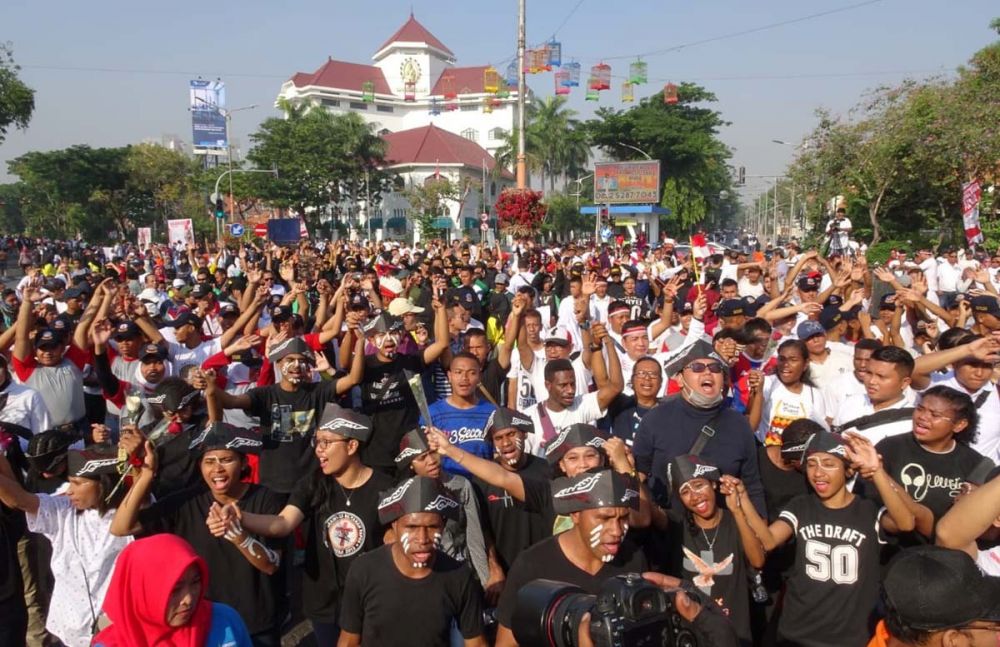 Languages
Languages
Besides the formal language, Indonesian, East Java people use Javanese as daily language. Javanese as spoken in the western part of East Java (Kulonan) is a similar dialect to the one spoken in Central Java, with its hierarchy of high, medium, and low registers. In the eastern part, such as Surabaya, Malang, and others, a more egalitarian version of Javanese is spoken, with less regard of hierarchy and a richer vocabulary for vulgarity.
 The dialect is notable for its roughness compared to other dialects spoken elsewhere in Java (especially the Mataram dialect spoken around Surakarta and Yogyakarta, which is renowned for its smoothness) and contributes to the stereotype among Javanese people of East Javanese being “blunt” and “loud”.
The dialect is notable for its roughness compared to other dialects spoken elsewhere in Java (especially the Mataram dialect spoken around Surakarta and Yogyakarta, which is renowned for its smoothness) and contributes to the stereotype among Javanese people of East Javanese being “blunt” and “loud”.
Variants of Javanese are also used by Osing and Tengger minorities, the former utilizing a Balinese-influenced Javanese by virtue of its closeness with Bali island, and the latter speaking an archaic form of the language that retains many features now lost in other more-innovative Javanese dialects.
Other than Javanese, minority language includes Madurese, spoken by around 4 million ethnic Madurese people inhabiting Madura and the Kangean and Masalembu Islands. Though they live practically next door with the Javanese, the language is actually more closer genetically to Balinese, Malay, and Sundanese.

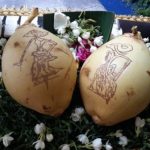
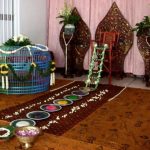

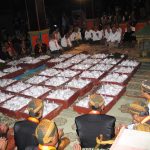
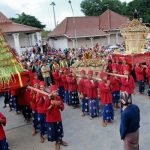
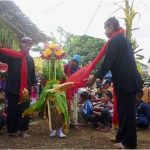

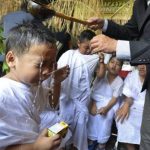

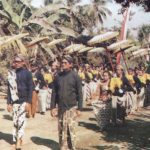
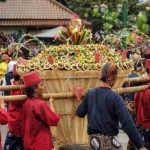
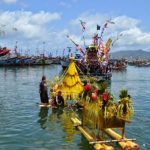
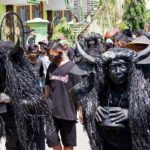
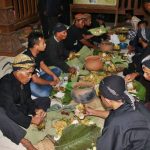

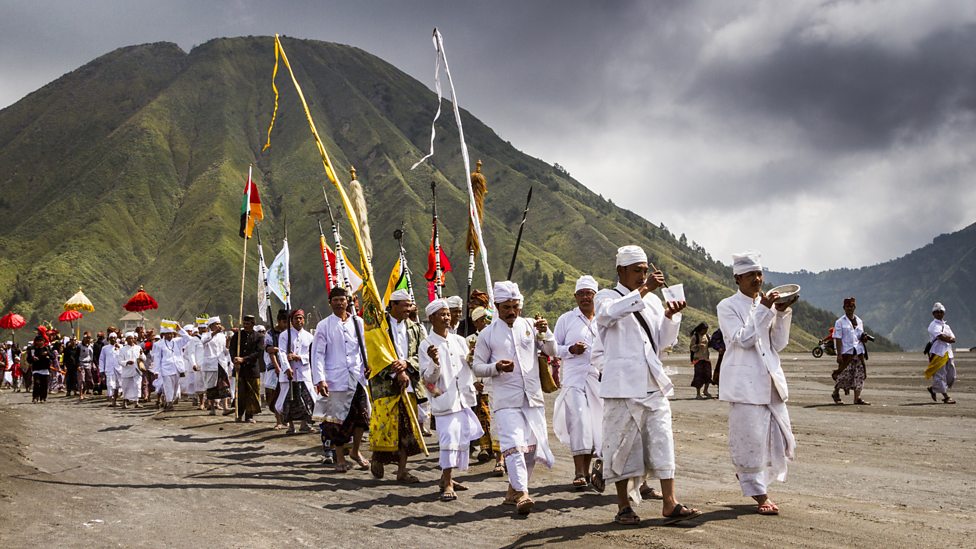 Religion
Religion
A long time ago, Hinduism and Buddhism dominated the island until Islam gradually supplanted Hinduism in the 14th and 15th century. The last nobles and people of the fallen Majapahit fled to Bali. Islam spread from northern cities in Java where many Muslim traders from Gujarat, India stopped by.
 The eastern part of East Java, from Surabaya to Pasuruan, and the cities along the coast, and back to Banyuwangi to Jember, are known as the eastern salient, or “Kawasan Tapal Kuda” (the Horseshoe Region).
The eastern part of East Java, from Surabaya to Pasuruan, and the cities along the coast, and back to Banyuwangi to Jember, are known as the eastern salient, or “Kawasan Tapal Kuda” (the Horseshoe Region).
A remnant of Hindu tradition and syncretic abangan exists because of Islamic and Hinduism acculturation in Java.
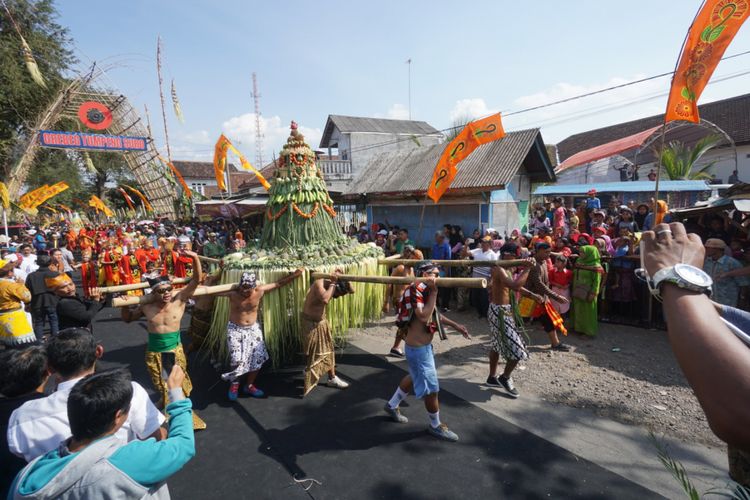 The majority of the population of East Java generally adheres to Islam, and a few others are Christian, Catholic, Hindu, and Buddhist. Some of the population, especially the Javanese, still adhere to the Kejawen culture.
The majority of the population of East Java generally adheres to Islam, and a few others are Christian, Catholic, Hindu, and Buddhist. Some of the population, especially the Javanese, still adhere to the Kejawen culture.
The Madurese are generally Muslim and are known to be very obedient in practicing Islam. The majority of the Osing tribe are Muslim, while the majority of the Tengger tribe are Hindu.
The Chinese generally adhere to Buddhism, Christianity, Catholicism, Confucianism and a small proportion of them embrace Islam, even the Cheng Ho Mosque in Surabaya is managed by Chinese, and has an architecture like a temple.
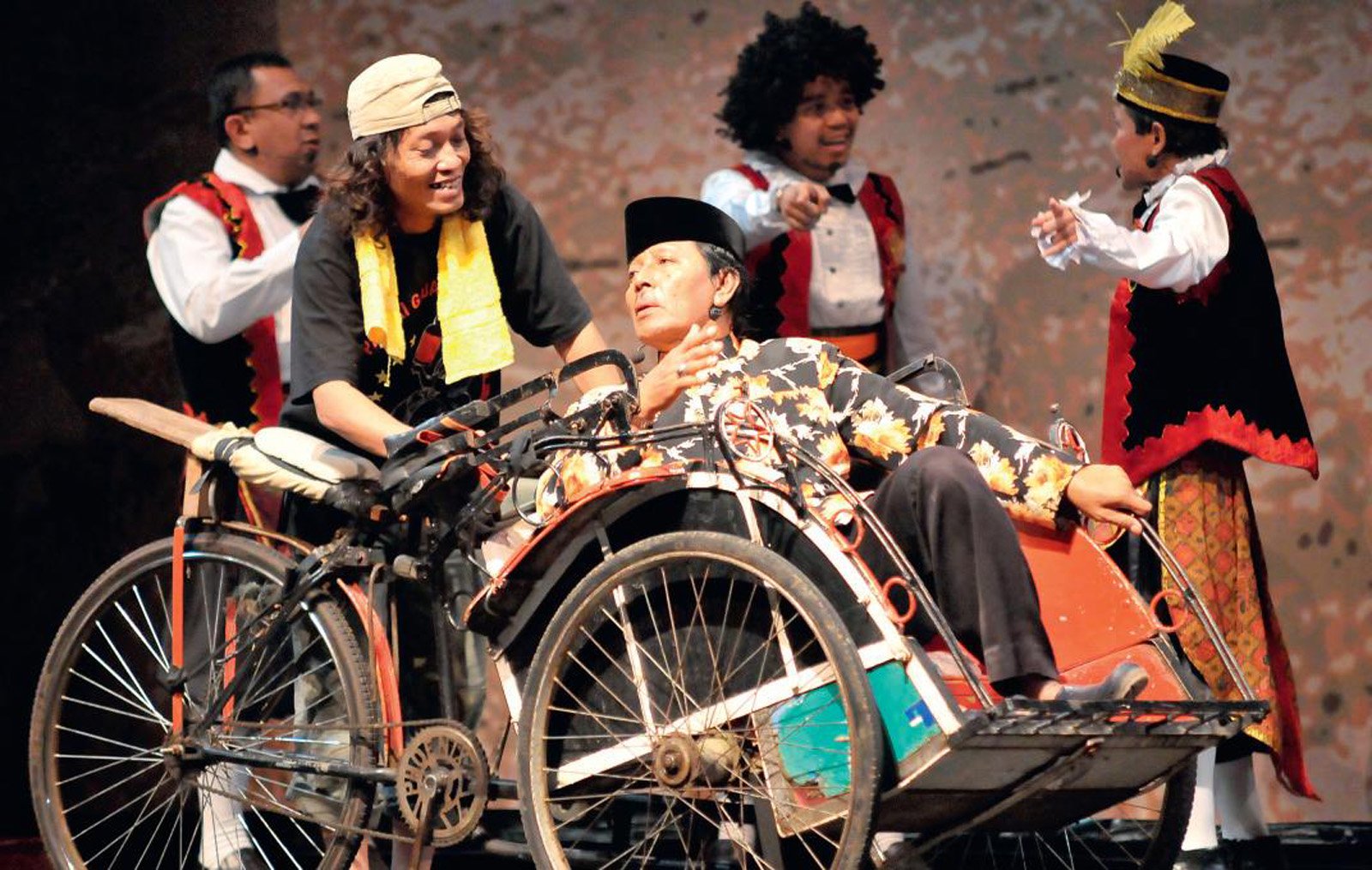 Arts
Arts
East Java has a number of distinctive art. Ludruk is one of the East Javanese art is quite well known, namely the art of the stage that generally all the players are male. Unlike the Ketoprak which tells the life of the palace, ludruk tells the daily life of ordinary people, often spiced with humor and social criticism, and generally opened with Dance Remo, and parikan.
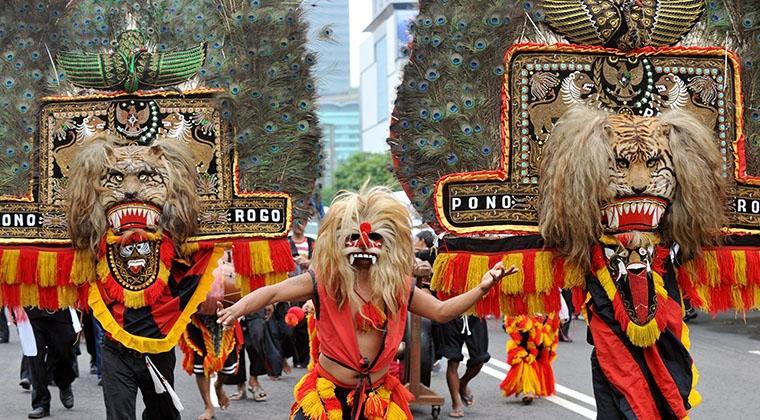 Currently traditional ludruk groups can be found in the area of Surabaya, Mojokerto and Jombang; although its presence increasingly defeated by modernization.
Currently traditional ludruk groups can be found in the area of Surabaya, Mojokerto and Jombang; although its presence increasingly defeated by modernization.
Reog from Ponorogo is a typical art that has been patented since 2001, and has now also become the icon of East Javanese art. Staging reog accompanied by horse braid (kuda lumping) are accompanied by elements of the occult.
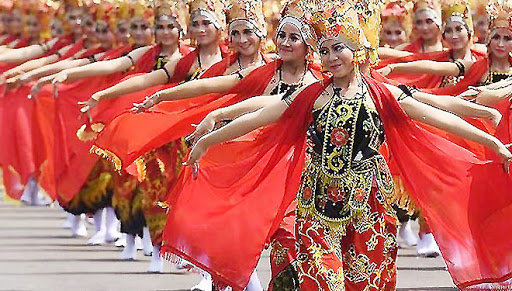 Famous arts of East Java include puppet purwa East Javanese style, mask mastermind in Madura, and made. In the area Mataraman Middle Javanese arts such as Ketoprak, and shadow puppets are quite popular. Famous legend of East Java, among others Damarwulan, Angling Darma, and Sarip Tambak-Oso.
Gandrung, iconic Banyuwangi dance
Famous arts of East Java include puppet purwa East Javanese style, mask mastermind in Madura, and made. In the area Mataraman Middle Javanese arts such as Ketoprak, and shadow puppets are quite popular. Famous legend of East Java, among others Damarwulan, Angling Darma, and Sarip Tambak-Oso.
Gandrung, iconic Banyuwangi dance
Traditional dance in East Java can be generally grouped into Middle Javanese style, East Javanese style, Osing style and Madurese styles. Classical dances include gandrung, gambyong dance, dance srimpi, dance bondan, and wanderer.
There is also a sort of lion dance culture in East Java. Art exists in two districts namely, Bondowoso, and Jember. Singo Wulung is a distinctive culture Bondowoso. While Jember have the tiger kadhuk. Both are art that is rarely encountered.

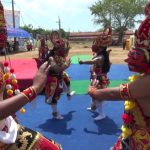
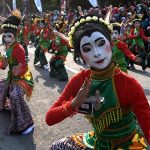
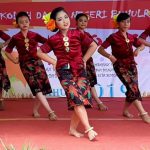
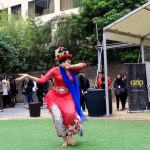
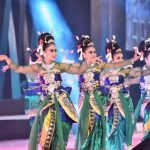


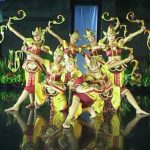
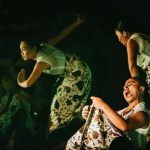

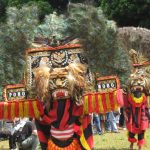
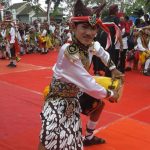
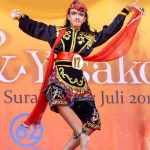
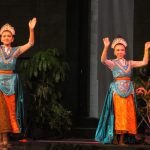
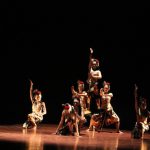
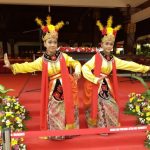
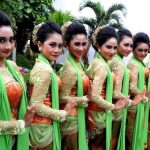
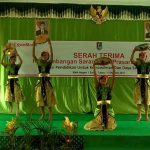
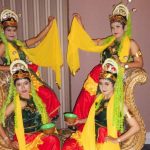
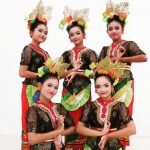
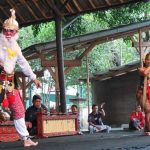

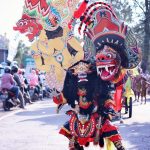
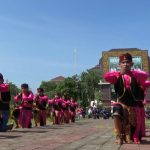
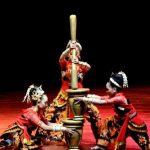
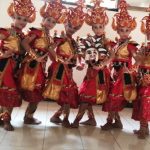
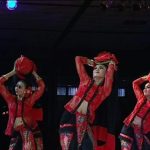
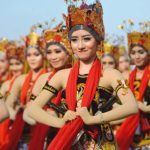
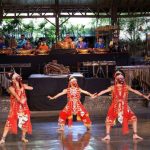
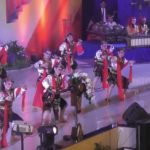
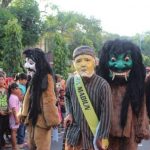
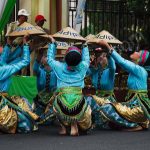
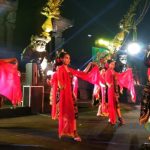


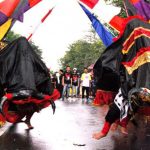
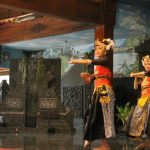
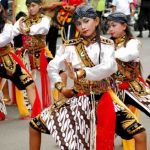
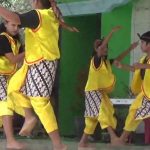
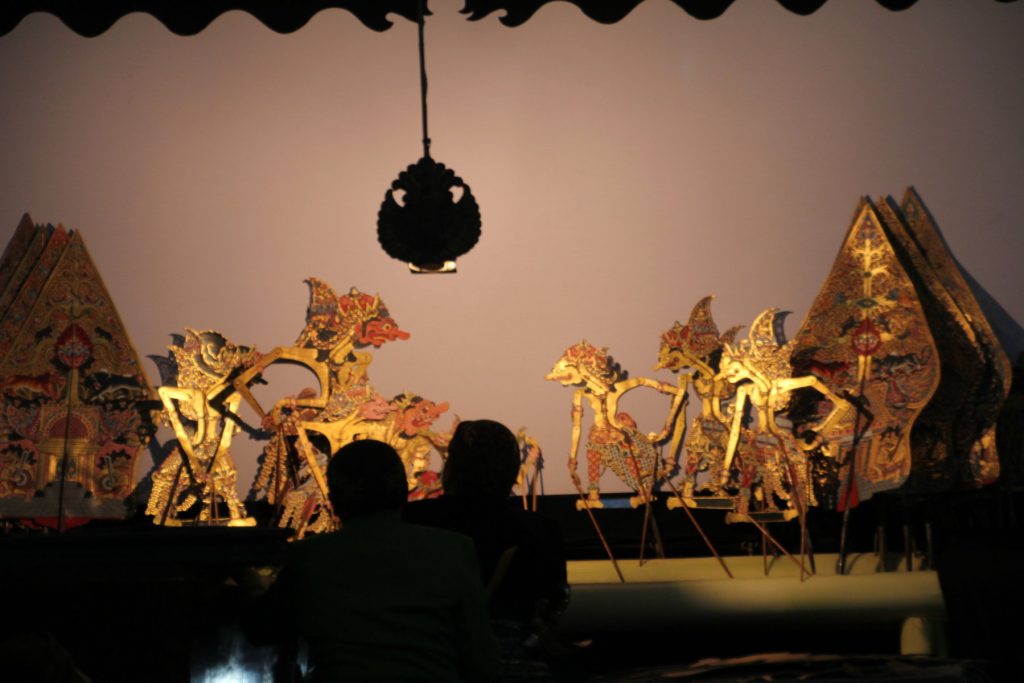 Culture
Culture
Culture and customs of Javanese in the western part of East Java received a lot of influence from the Middle Javanese, so this area is known as Mataraman, indicating that the area was once the territory of the Sultanate of Mataram. The area includes the former residency of Madiun (Madiun, Ngawi, Magetan, Ponorogo, Pacitan), ex-residency Kediri (Kediri, Tulungagung, Blitar, Trenggalek, Nganjuk), and part of Bojonegoro. As is the case in Central Java, wayang kulit, and Ketoprak quite popular in this region.
 East Java’s west coast region is heavily influenced by the Islamic culture. This area covers an area of Tuban, Lamongan and Gresik. In the past the north coast of East Java is the entry area, and the center of the development of Islam. Five of the nine members of the walisongo are buried in this area.
East Java’s west coast region is heavily influenced by the Islamic culture. This area covers an area of Tuban, Lamongan and Gresik. In the past the north coast of East Java is the entry area, and the center of the development of Islam. Five of the nine members of the walisongo are buried in this area.
In the area of ex-residency of Surabaya (including Sidoarjo, Mojokerto and Jombang), and ex-residency Malang, had little cultural influence Mataraman, considering this region is an area arek (the term for offspring Kenarok), especially in the area of Malang that make this area difficult to be affected by Mataraman culture.
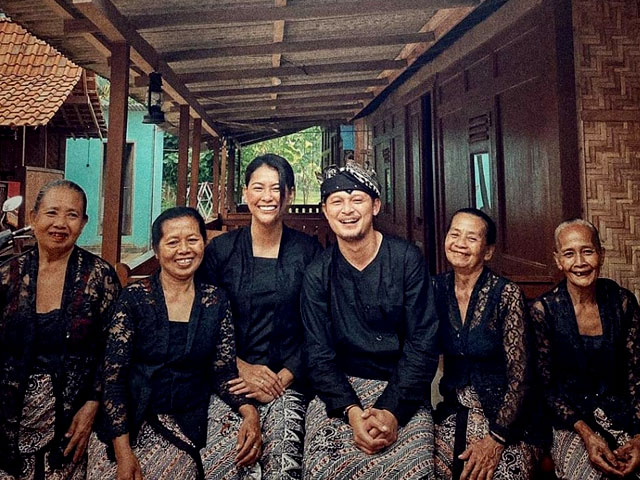 Customs in horse hooves region heavily influenced by the culture of Madura, given the magnitude of Madura tribe population in the region. Osing social mores of the culture is a blend of Java, Madura and Bali. While the Tenggerese tribe is heavily influenced by Hindu culture.
Customs in horse hooves region heavily influenced by the culture of Madura, given the magnitude of Madura tribe population in the region. Osing social mores of the culture is a blend of Java, Madura and Bali. While the Tenggerese tribe is heavily influenced by Hindu culture.
Villagers in East Java, as well as in Central Java, has ties based on friendship, and territorial. Various ceremonies were held, among others: tingkepan (ceremony gestational age of seven months for the first child), babaran (ceremony before the birth of the baby), sepasaran (ceremony after the baby was five days), Pitonan (ceremony after the baby was seven months old), circumcision, fiancé.
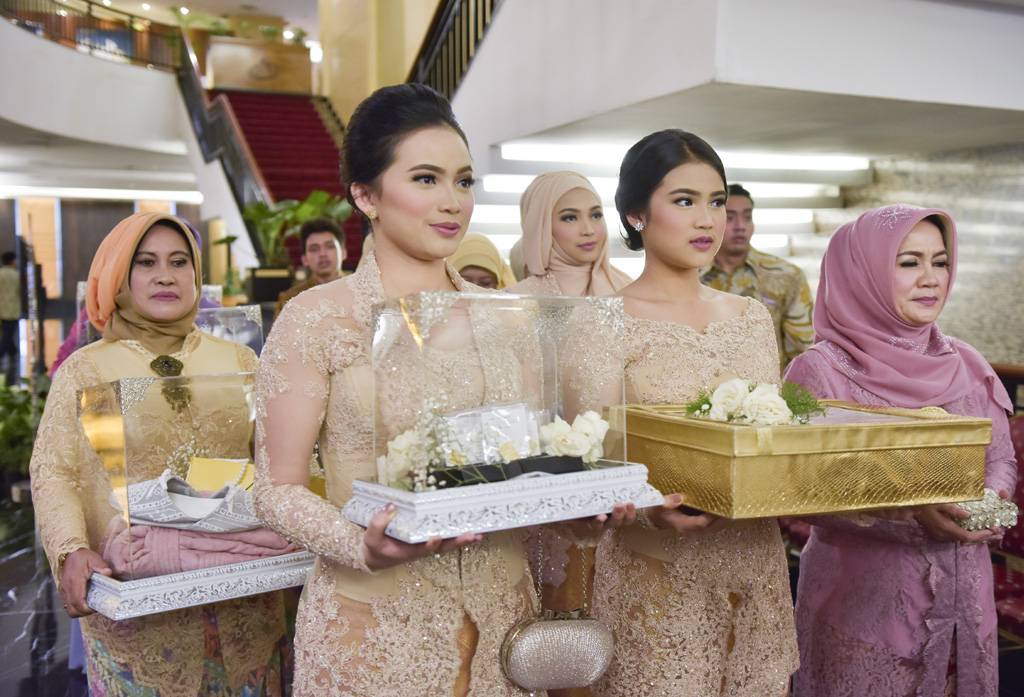 East Java’s population generally embraced monogamy. Prior to application, the men doing the show nako’ake (ask if the girl already had a husband), once that is done peningsetan (application). The wedding ceremony was preceded by a gathering or kepanggih.
East Java’s population generally embraced monogamy. Prior to application, the men doing the show nako’ake (ask if the girl already had a husband), once that is done peningsetan (application). The wedding ceremony was preceded by a gathering or kepanggih.
Communities on the west coast: Tuban, Lamongan, Gresik, even Bojonegoro has a habit of women’s families applying common man (Ganjuran), different from the usual habits of other regions in Indonesia, where the men apply for women. And generally men will then be entered into the family of the woman. To pray for the deceased person, usually a family party did send donga on day 1, 3rd, 7th, 40th, 100th, 1 year and 3 years after death.
Kabupaten & Kotamadya
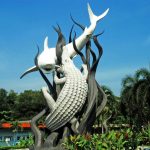
Surabaya

Probolinggo

Pasuruan
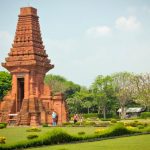
Mojokerto

Malang
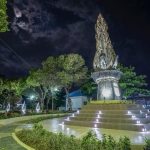
Madiun
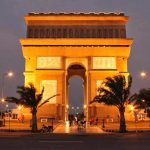
Kediri
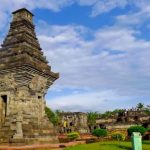
Blitar
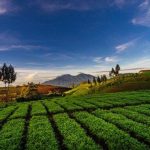
Batu
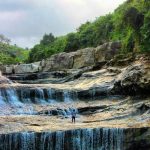
Tulungagung
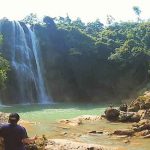
Tuban
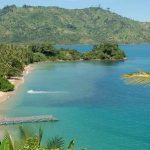
Trenggalek

Sumenep
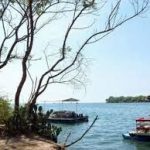
Situbondo
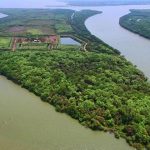
Sidoarjo
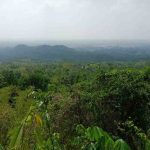
Sampang

Probolinggo
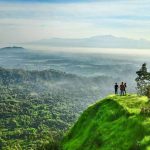
Ponorogo
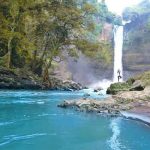
Pasuruan
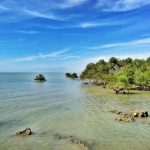
Pamekasan
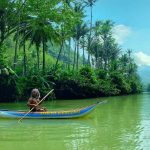
Pacitan
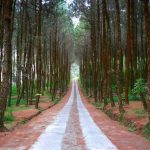
Ngawi
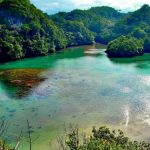
Nganjuk

Malang

Mojokerto
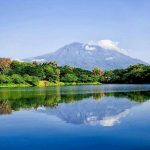
Magetan
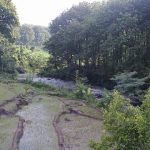
Madiun

Lumajang
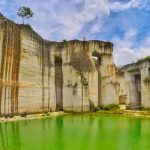
Lamongan
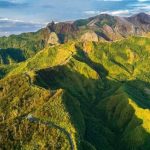
Kediri
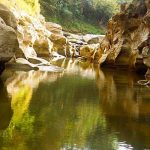
Jombang
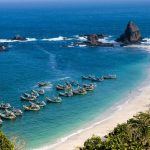
Jember

Gresik

Bondowoso
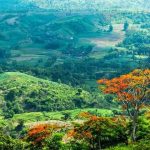
Bojonegoro
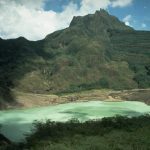
Blitar
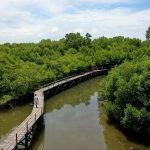
Banyuwangi
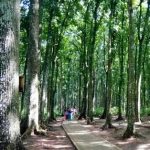
Bangkalan
National Parks
There are four National Parks located in East Java province. They are ; Meru Betiri, Alas Purwo, Baluran, and Tengger-Semeru.
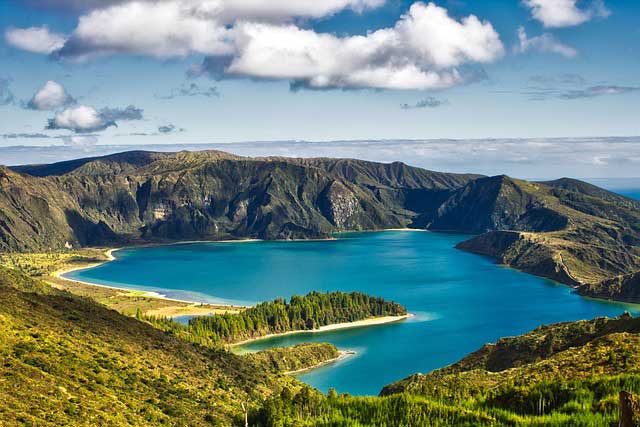
 Meru Betiri National Park – Between Jember and Banyuwangi districts, this park covers 580 km2 (224 sq mi). Hard to get to, it contains coastal rainforest and scenery and is home to abundant wildlife.
Meru Betiri National Park – Between Jember and Banyuwangi districts, this park covers 580 km2 (224 sq mi). Hard to get to, it contains coastal rainforest and scenery and is home to abundant wildlife.
Alas Purwo National Park – This 434 km2 (168 sq mi) park is formed by the Blambangan Peninsula (southeastern Java). Comprising mangrove, savanna, lowland monsoon forests and beaches, the park’s name means First Forest in Javanese. Javanese legend says that the earth first emerged from the ocean here.
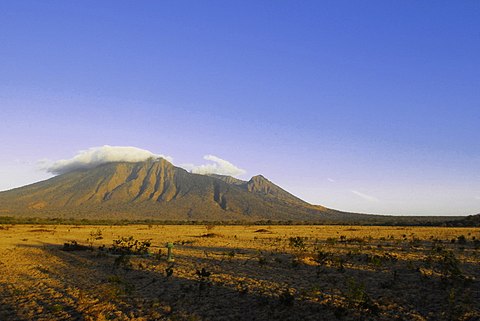
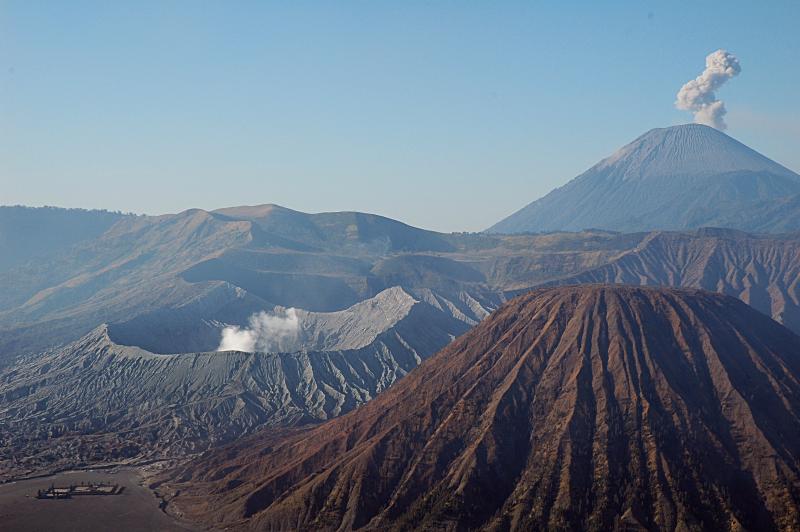 Baluran National Park – This 250 km2 (97 sq mi) national park is located in northeastern Java, known as The Little Africa, formerly extensive savanna has been largely replaced by Acacia.
Baluran National Park – This 250 km2 (97 sq mi) national park is located in northeastern Java, known as The Little Africa, formerly extensive savanna has been largely replaced by Acacia.
Bromo Tengger Semeru National Park – Located in East Java at the region of Probolinggo and Pasuruan, 70 km (43 mi) from Surabaya the capital city of East Java province. Mount Bromo is one of the great hiking and trekking destinations for overseas tourists. The scenic view of Bromo also attracts hundreds of photo enthusiasts to see the views there.
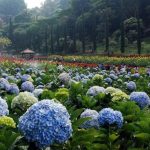

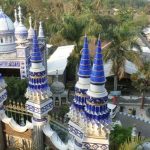
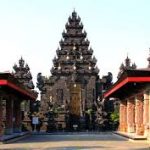

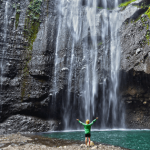
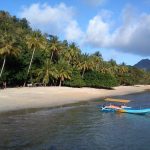






































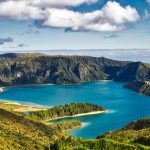
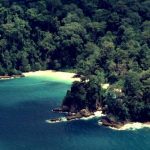
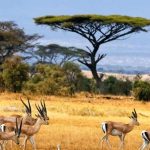

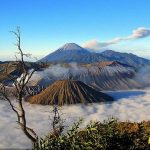
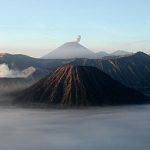

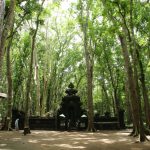
 Tourism
Tourism
East Java has a number of interesting sights. One of the tourist icon is Mount Bromo in East Java, which is inhabited by the Tengger tribe, where the ceremony is held every year Kasada. In the mountainous region of Tengger also there is a waterfall that is Madakaripura which is the last hermitage Mahapatih Gajah Mada before serving in the kingdom of Majapahit.
 Madakaripura Waterfall has a height of about 200 meters, which makes it the highest waterfall on the island of Java and the second highest in Indonesia.
Madakaripura Waterfall has a height of about 200 meters, which makes it the highest waterfall on the island of Java and the second highest in Indonesia.
East Java also has some other mountainous tourist area of which is Malang Raya mountainous area known as the natural mountain tourist area that includes Malang and Batu. Tretes and Trawas mountainous areas, are also known to have characteristics such as Puncak area in West Java province.
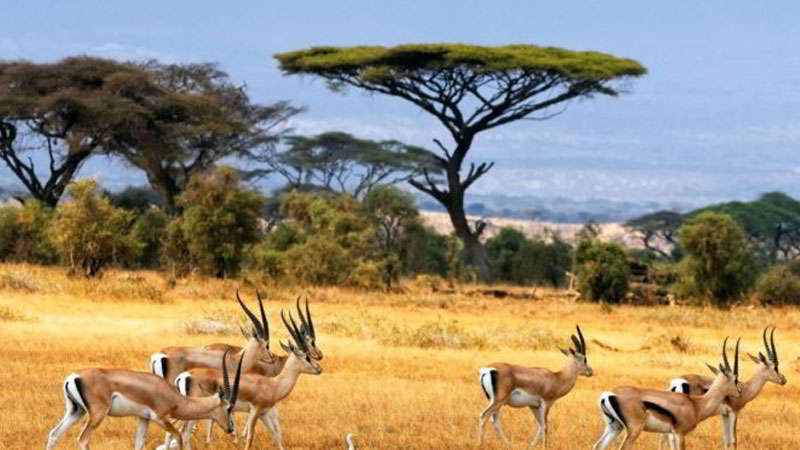 Other natural attractions in East Java is the National Park (4 of 12 National Parks in Java) and Taman Safari Indonesia II in Prigen.
Other natural attractions in East Java is the National Park (4 of 12 National Parks in Java) and Taman Safari Indonesia II in Prigen.
East Java is also contained relics of history in the classical era. Trowulan sites in Mojokerto, once the center of the Majapahit Kingdom, there are dozens of temples and tombs of the kings of Majapahit. Other temples spread throughout much of East Java, including Penataran temple in Blitar. In Madura, Sumenep is the center of the kingdom of Madura, where there are Kraton Sumenep, museums, and the tombs of the kings of Madura (Asta Tinggi Sumenep).
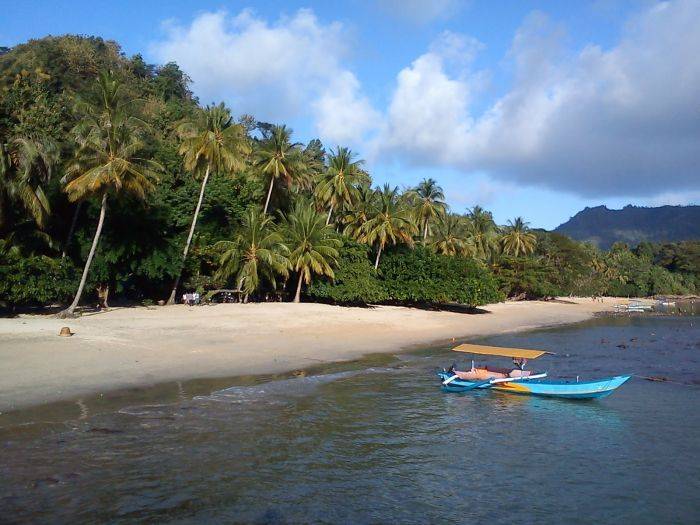 East Java is known for its coastal scenery. On the south coast there is the Prigi Beach, Pelang Beach and Pasir Putih Beach in Trenggalek, Popoh Beach in Tulungagung, Ngliyep Beach, and tourism areas such as the Jatim Park, Museum Angkut, Batu Secret Zoo, Batu Night Spectacular, Eco Green Park in Batu, and the Watu Ulo Beach in Jember.
East Java is known for its coastal scenery. On the south coast there is the Prigi Beach, Pelang Beach and Pasir Putih Beach in Trenggalek, Popoh Beach in Tulungagung, Ngliyep Beach, and tourism areas such as the Jatim Park, Museum Angkut, Batu Secret Zoo, Batu Night Spectacular, Eco Green Park in Batu, and the Watu Ulo Beach in Jember.
 East Java also has a beach that the waves is one of the best in the world, namely the Plengkung Beach located in Banyuwangi. In addition there Kenjeran Beach in Surabaya, and the White Sand Beach in Situbondo. Lake in East Java, among others Sarangan in Magetan, Ir. Sutami Dam in Malang, and Selorejo Dam in Blitar.
East Java also has a beach that the waves is one of the best in the world, namely the Plengkung Beach located in Banyuwangi. In addition there Kenjeran Beach in Surabaya, and the White Sand Beach in Situbondo. Lake in East Java, among others Sarangan in Magetan, Ir. Sutami Dam in Malang, and Selorejo Dam in Blitar.
In the coastal area of the north there are a number of tombs of the saints, which are places of pilgrimage for Muslims. Five of the nine walisongo are buried in East Java: Sunan Ampel in Surabaya, Sunan Giri, and Malik Ibrahim in Gresik, Sunan Drajat in Paciran (Lamongan), and Sunan Bonang, Tuban.
 In the northern coastal region there are a number of caves, including Maharani Cave in Lamongan and Tuban Akbar Cave and Cave Gong located in Pacitan. Other pilgrimage sites include the tomb of Indonesia’s first president Sukarno, in Blitar, as well as the tomb of the fourth Indonesian president Abdurrahman Wahid, known as Gus Dur, in Jombang.
In the northern coastal region there are a number of caves, including Maharani Cave in Lamongan and Tuban Akbar Cave and Cave Gong located in Pacitan. Other pilgrimage sites include the tomb of Indonesia’s first president Sukarno, in Blitar, as well as the tomb of the fourth Indonesian president Abdurrahman Wahid, known as Gus Dur, in Jombang.
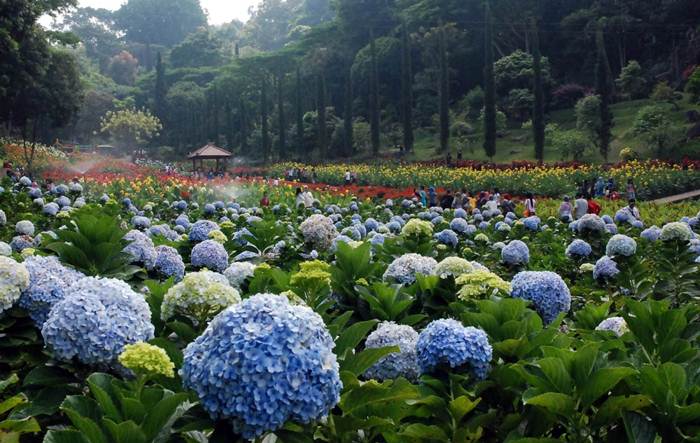 Malang Metropolitan Region is a leading tourist destination in Indonesia with the City of Batu as its center. Malang has various tourist areas including volcanoes to beaches, as well as man-made tour of the history of travel to an international-class theme park with the support of inter-provincial transportation via trains, buses, and airplanes are available in Malang.
Malang Metropolitan Region is a leading tourist destination in Indonesia with the City of Batu as its center. Malang has various tourist areas including volcanoes to beaches, as well as man-made tour of the history of travel to an international-class theme park with the support of inter-provincial transportation via trains, buses, and airplanes are available in Malang.
Surabaya is the center of government, entertainment, financial, and business center of East Java, where there are Tugu Pahlawan, the Museum MPU Tantular, Surabaya Zoo, Submarine Monument, Ampel Region, and the Downtown Tunjungan area.
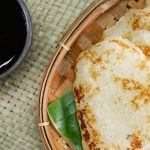

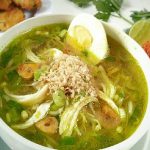
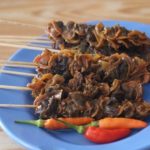
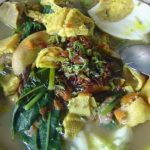
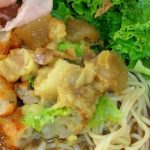

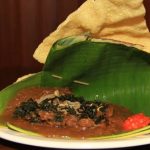
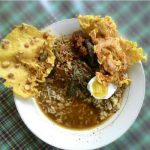
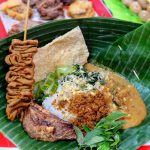
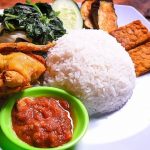

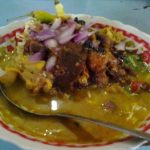
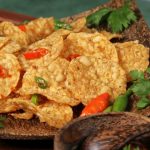
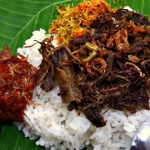
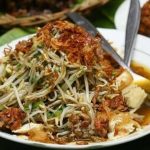
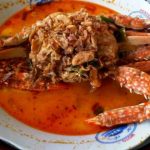


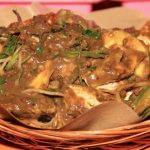
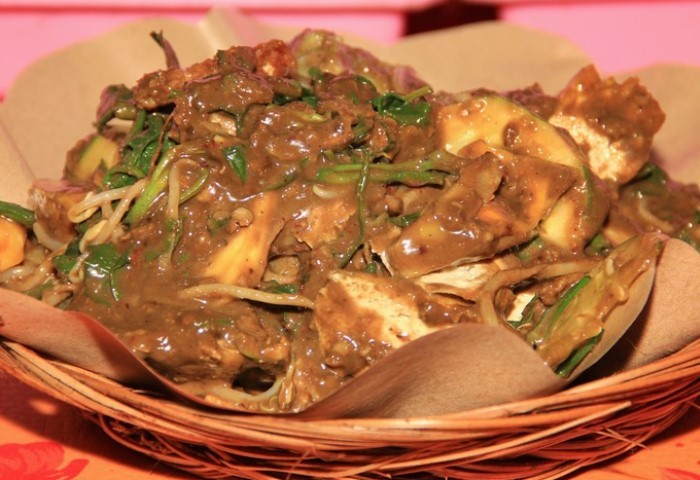 Cuisine
Cuisine
Some typical East Javanese dishes include Bakso Malang, Rawon, and Tahu Campur Lamongan. Surabaya is famous for Rojak Cingur, Semanggi, Lontong Balap, clam satay, mussels, and rice cakes.
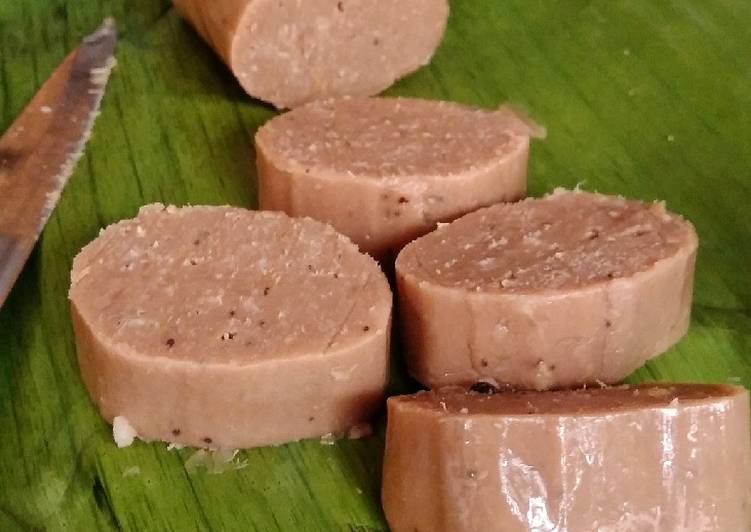 Malang is popular for a variety of processed fruits (especially apples), tempeh crisps, Bakpao telo, Bakso Malang, rawon, and Cwie noodles.
Malang is popular for a variety of processed fruits (especially apples), tempeh crisps, Bakpao telo, Bakso Malang, rawon, and Cwie noodles.
Kediri is famous for tahu takwa, tahu pong, tungku fried rice and getuk pisang.
Madiun is known for pecel madiun, and as a producer of Brem. The subdistrict of Babat, Lamongan is famous as a producer of wingko. Bondowoso is also well known as a producer of tape. Gresik famous is for nasi krawu, otak-otak bandeng, and bonggolan.
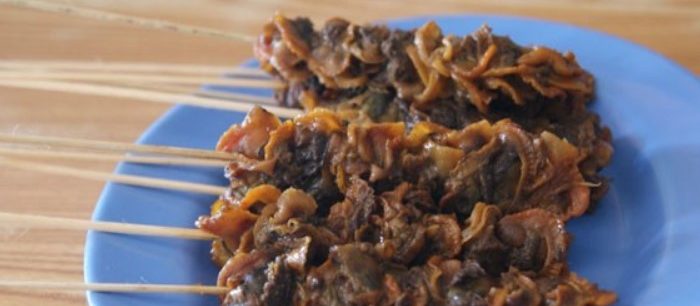 Sidoarjo is famous for shrimp crackers, shrimp paste, and petis. Ngawi is famous for tempeh chips, tahu tepo, and nasi lethok. Blitar has the typical food that is pecel. Rambutan is also native to Blitar.
Sidoarjo is famous for shrimp crackers, shrimp paste, and petis. Ngawi is famous for tempeh chips, tahu tepo, and nasi lethok. Blitar has the typical food that is pecel. Rambutan is also native to Blitar.
Banyuwangi is famous for sego tempong, salad soup, and pecel rawon. Jember have special food made of tape that is Suwar-suwir and tape proll that is very sweet.
Corn is known as one of the staple food of the Madurese, while cassava is processed into gaplek, a staple food used to be a part of the population in Pacitan and Trenggalek. Tulungagung is famous for its lodho, goat satay and pati rice. Ponorogo is famous for Satay Ponorogo, Tiwul Goreng and Dawet Jabung.

